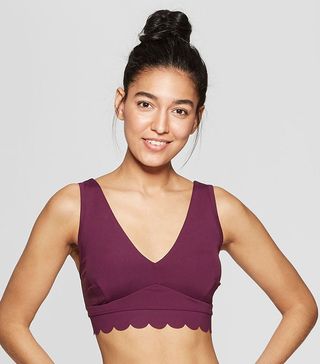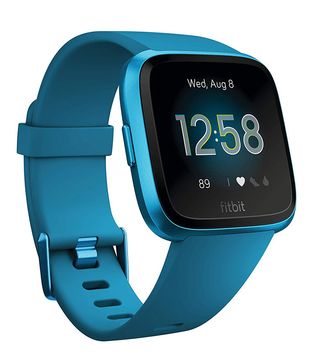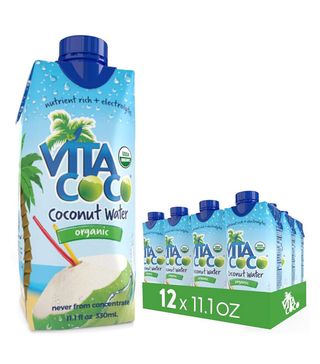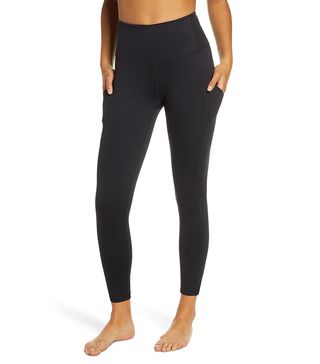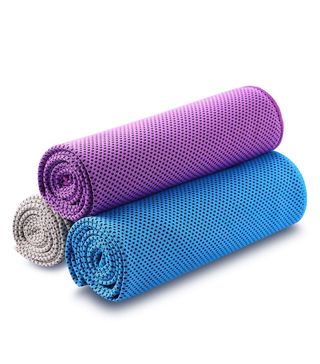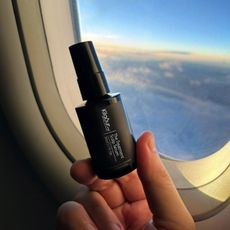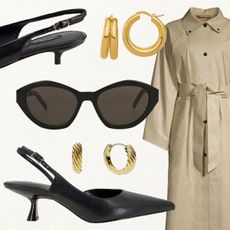Your Guide to Working Out When It's Way Too Hot
Summer is really one of the best times of the year. Picnics, barbecues, beach days, endless ice cream cones… but one of the drawbacks? Relentless heat. You know, that mid- to end-of-summer, oppressive heat that makes you want to jump into a pool of ice (or just shower multiple times a day).

The hot weather can really throw a wrench into some plans or daily activities, like a workout. You want to get some fresh air and take advantage of the warm weather by exercising outside, but the heat can really get to your body. Sometimes it's best to just work out indoors at the gym or a studio, but for the times when you want some fresh air, we asked integrative nutritionist and health coach at Parsley Health, Erica Zellner, for her tips on staying safe in the heat.
Change Your Workout Time
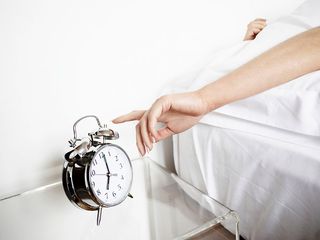
The earlier you can work out, the better, since 10 a.m. to 3 p.m. is the time of day when there's peak heat and the sun is most intense. "Ideally, we'd want to be changing our routine within reason, so working at 5, 6, or 7 in the morning since it's still relatively cool at that point," Zellner recommends. "Even if you push it to the evening, you're dealing with a lot of residual humidity and heat; it doesn't get as cool. But obviously that's not doable for everybody. It's really luxurious to be able to play around with your schedule that much. So work within reason with the time of day."
Make a Plan for Your Evening Workout

Zellner recognizes that there are some instances you might have to train during peak hours. "If you're training for a race and you know it's going to be in the middle of the day, like for some reason it starts at noon. Then you do want to get your body used to those higher temperatures and you just want to take it super slow, take your pace a lot slower than you normally would, and allow your body to acclimate to the higher demands of a high temperature," she recommends.
If you're more of an evening exercise person (that's my preference, actually), then you might want to adjust your routine. "Definitely don't do it after your evening meal. In the summertime when it's hot, it's going to take a lot longer for your body to do a really thorough job with digesting," Zellner says. "And if you have something with a decent amount of protein—which every meal should have a decent amount of protein—your core temperature is actually going to be a little hotter because of thermogenesis, because of that breakdown process. So you want to do it in a more empty stomach than you're used to the rest of the year so that you're not burdening yourself with that."
Also, the time is important to be aware of, too. You'll want to go out later in the evening when it's cooler, but not at, say, 10 p.m. "Maybe around 6 or 7 at night, but not so late that if you're doing something really high intensity like going for a bike ride or run, that you're not amped up and you can't come down from it and fall asleep. You want to give at least two hours before you go to bed because you're going to be amped up from all these endorphins. It's a delicate balance," she says.
Try a New Fitness Routine
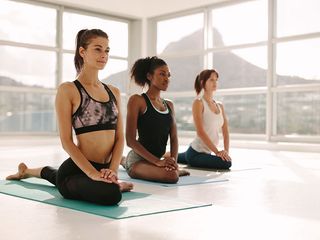
There are some pros to this type of weather, and one of them is might encourage you to try something new, instead of your normal workout. "Most of the time, the heat affects us in a negative way, but there are actually some benefits as well," Zellner says. "One of the things that I talk with people about is changing up their type of workout because if you're somebody who's constantly weightlifting, like Crossfit, and you switch to a yoga class in the summertime, or an outdoor yoga class, the heat's going to let you get deeper into stretches because your muscles are going to be more warm, more limber, so you can use that to your advantage."
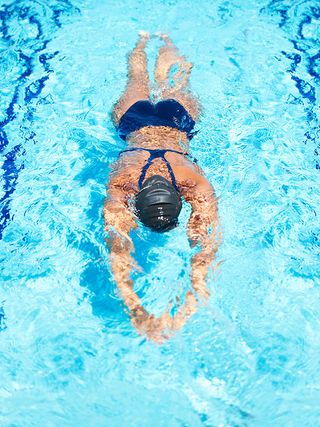
To beat the heat, Zellner recommends going for a swim. "If you're a big fan of running, cardio, or biking, then to stay in that same realm, you can try a swim workout because the water is going to cool you. You're not going to have to worry about overheating, but you're still getting a great cardio workout in.
Listen to Your Body
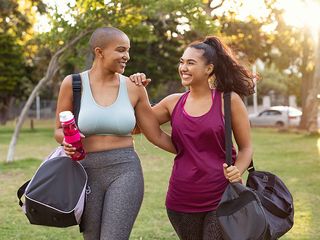
As long as you're paying attention to your body's needs during your workout and being a little bit more gentle with yourself, no fitness routine is off limits, Zellner says. "Be conscious of what your body is telling you."
Stay Hydrated
This one's a given, but must be repeated. "Even if you weren't working out at all, your hydration needs are going to be higher in the summertime because of perspiration because it's how we cool off," Zellner says. "In the summertime, baseline water needs to be increased. On top of that, if you're working out, I recommend at least an additional 12 ounces of water for every 30 minutes of activity. So if you do an hour-long run, you want to add 24 ounces of water total to your day. While you're working out, you want to be taking small sips of water at least every 15 minutes, even if you don't feel thirsty because you're going to be sweating out so much."
Additionally, pay attention to your salt levels. When you sweat so much, your salt and potassium balances are going to be depleted. "You don't necessarily need to jump to a Gatorade or Powerade or anything like that, coconut water is an amazing source of electrolytes," she says. "You can also go really old-school and sprinkle some pink Himalayan salt and squeeze of lemon into water, but that frankly doesn't taste that good, it's just very effective."
For longer runs or bike rides, Zellner recommends bringing salt packets with you, because if your salt levels are getting lower, that might lead to muscle cramps. If you feel a cramp coming on, she suggests taking a salt packet.
Eat Well

You already know you should eat a little lighter before exercise, but after your workout, take it easy and don't feel the pressure to load up if you're not feeling it. "Afterward, you don't want to avoid anything heavy food-wise. We live in this society that thinks 'Oh my gosh I worked out, so I need to have a protein shake otherwise it's for nothing,' and really the research shows that unless you're an elite athlete training multiple times a day, you don't need to replenish super quickly. The window of replenishment opportunity is four to five hours long, so listen to your body. Drink some water afterward. If you're feeling hungry, go for it, but try not to go for something really protein- or fat-heavy, keep it lighter. If you don't feel hungry for a while, that is fine too, you don't have to force yourself to eat."
Dress Smart
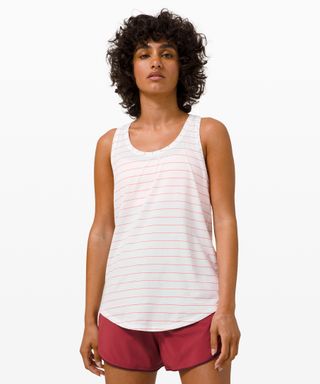
What you wear during a sweltering exercise session can affect your performance and how you feel afterward. "You want to allow for as much airflow as possible. [Choose] things that are looser rather than tighter. Go for a technical fabric, things that wick moisture away from the body—so anything from Under Armour or Lululemon that's made for the heat," Zellner suggests. "Also you want to go for lighter colors because light colors are actually going to help reflect heat away from the body, whereas black or dark colors will absorb it and actually heat you up more."
Take a Cool Shower

A cold shower after a workout is a no-brainer, but Zellner actually recommends taking a cool one before intense activity, too. "You're going to lower your internal body temperature by doing that," she says. "Leave your hair wet, put it up into a messy bun, and let the water evaporate as it drips down you—it will act to cool you. There are also towels that you can get that are made for cooling; you just wet them, wring them out, and you can put it on the back of your neck, or behind your knees, or under your armpits, the places that will help drive your internal temperature down a little bit."
Don't let the heat get you down during your next exercise session. Just listen to your body and be prepared.
Next up: The 4 Best Workouts for Burning Calories, According to an Expert
Disclaimer
This article is provided for informational purposes only and is not intended to be used in the place of advice of your physician or other medical professionals. You should always consult with your doctor or healthcare provider first with any health-related questions.
Sarah is lifestyle writer and editor with over 10 years of experience covering health and wellness, interior design, food, beauty, and tech. Born and raised in Los Angeles, she attended New York University and lived in New York for 12 years before returning to L.A. in 2019.
In addition to her work on THE/THIRTY and Who What Wear, she held editor roles at Apartment Therapy, Real Simple, House Beautiful, Elle Decor, and The Bump (sister site of The Knot).
She has a passion for health and wellness, but she especially loves writing about mental health. Her self-care routine consists of five things: a good workout, “me” time on the regular, an intriguing book/podcast/playlist to unwind after a long day, naps, and decorating her home.
